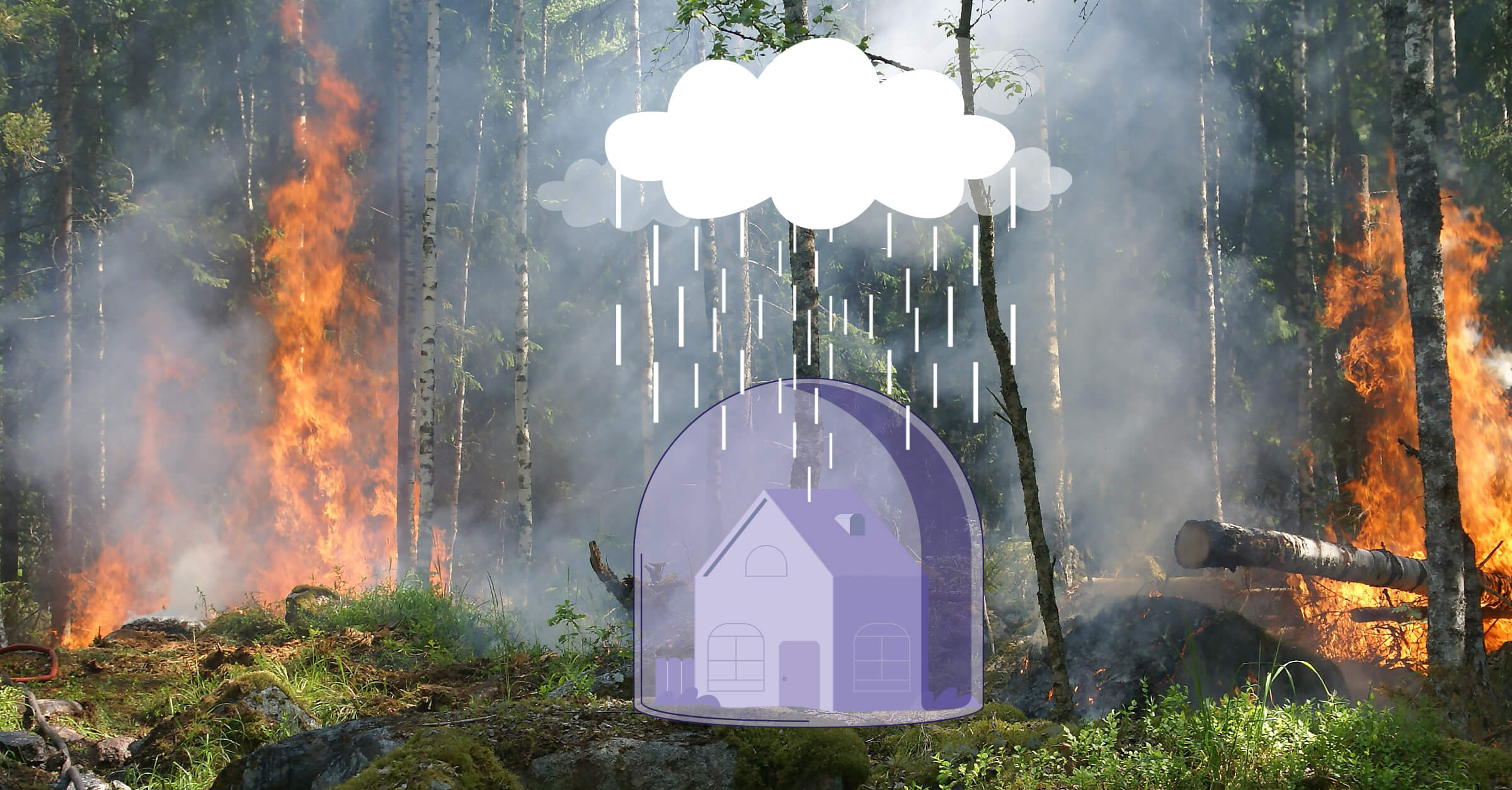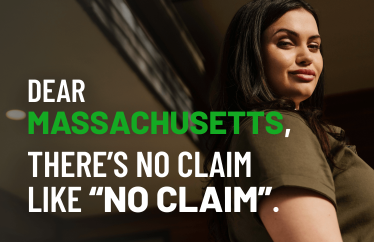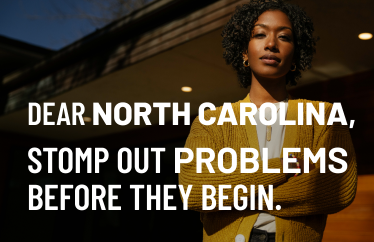What supplemental coverage should all Californians consider?
As the most populous state in the nation, it’s no surprise that California is the country’s largest insurance market. Compared to the average annual cost of homeowners insurance nationwide ($1,200), premiums in the Golden State are less expensive, costing the average homeowner about $1,113 a year.
The standard California homeowners insurance policy includes coverage for the physical structure of a home, additional living expenses, liability protection, additional structures on a property and personal possessions (up to a certain limit). While fairly comprehensive, most policies leave homeowners vulnerable to certain disasters. Check out the supplemental policies we recommend California residents consider based on where they live.
Fire insurance
Who might need it: Homeowners in fire-prone areas
California is the state most people associate with wildfires. It was home to some of the most expensive wildfires in our country’s history. Homeowners policies generally cover damage caused by fires. But as we’ve learned from the 2017 wildfires in counties like Napa, Lake, Sonoma and Mendocino, sometimes supplemental insurance coverage is necessary.
Following recent wildfire disasters, insurers have refused to renew some policies in fire-prone areas. As a result, many homeowners are struggling to get access to adequate coverage. If you live in the mountains or in a canyon or…CLICK TO TWEET
Following recent disasters, insurers have refused to renew some policies in fire-prone areas. As a result, many homeowners are struggling to get access to adequate coverage. If you live in the mountains or in a canyon or foothill, you may need special coverage. Some homeowners purchase additional fire protection from private providers while others seek out state-sponsored programs, like the FAIR Plan. Learn more about that option here.
If you’re having a hard time qualifying for insurance or keeping the cost of premiums down after a wildfire, there may be something you can do. You could score a discount by installing devices like smoke detectors, alarms and sprinklers. The price you pay for insurance may also depend on how well you clear the brush and remove combustible materials. For more information and helpful resources, head to the California Department of Forestry and Fire Protection’s website.
Earthquake insurance
Who might need it: All California homeowners
There are more than 2,000 earthquake faults in California and moderate earthquakes (with a magnitude of 5.5 or more) strike California about four times a year. Yet only 17% of California homeowners have earthquake insurance. One possible reason is that the Golden State doesn’t require homeowners policies to cover earthquake damage. Unfortunately, many people don’t know that they need to purchase earthquake insurance separately. If they’re aware that they need supplemental insurance, they may be put off by the cost of additional coverage. With earthquake insurance, the deductible is often between 10% and 20% of the dwelling coverage limit.
If your current provider doesn’t offer earthquake insurance, there is another option. The privately funded and publicly managed California Earthquake Authority has affordable coverage. It provides more than three-quarters of the residential earthquake policies in the state through participating insurers. It also has a premium calculator that you can use to estimate the cost of earthquake insurance.
Every resident in California should do what they can to protect their homes from the threat of an earthquake. Make sure your house is bolted to its foundation. Tie down electronics, secure tall furniture (like bookcases and dressers) to the studs in the walls and brace the water heater and other large appliances. Hardware store supplies like latches, bungee cords and putty may also come in handy.
Flood insurance
Who might need it: Homeowners in high-risk flood zones
Floods are the most common and most costly natural disaster in our country. Every year, they cause billions of dollars in damage. Unfortunately, homeowners insurance does not typically cover flood damage. A 2016 poll from the Insurance Information Institute found that only 12% of American homeowners had a flood insurance policy, down from 14% in 2015. Homeowners who need flood insurance can purchase policies through FEMA’s National Flood Insurance Program (NFIP). California, which is becoming increasingly vulnerable to floods, had more than 240,000 active flood insurance policies in 2016. Every county has been declared a flood disaster area at least once.
An NFIP policy can cover up to $250,000 for the structure of a house and up to $100,000 for personal belongings. If you feel you need extra coverage, you can also get flood insurance from a private insurer. Just keep in mind that NFIP coverage includes protection from mudflows as well as overflow of inland or tidal waters. For homeowners, a flood insurance policy can cost between $400 and $2,000 a year.
Keep in mind that NFIP (Flood) coverage includes protection from mudflows as well as overflow of inland or tidal waters. For homeowners, a flood insurance policy can cost between $400 and $2,000 a year.CLICK TO TWEET
Recently, there have been rumors suggesting that California may create its own flood insurance program. But state insurance commissioner Dave Jones says that even though California residents pay more than they get out of the NFIP, a state takeover is not the solution. In the future, he wants the cost of damage from a fire or flood to be taken into account before the state agrees to complete projects in certain areas.
Residents who live on floodplains should consider elevating their homes. It can reduce annual insurance premiums by as much as 30%. You can also build channels or walls to direct floodwaters away from your house.
Landslide and mudflow insurance
Who might need it: Homeowners in regions susceptible to landslides
Landslides and mudflows are nowhere near as common as floods, fires and earthquakes. But they can happen in all 50 states. The U.S. Geological Survey lists California as a state that’s prone to landslides. The same tectonic plates that created its rolling hills, steep valleys and epic mountain ranges are to blame for recent disasters. This problem is exacerbated by California’s concentrated rain season, which loosens the soil on the state’s slopes.
Standard homeowners policies exclude “earth movement” events like landslides and mudflows. To protect your home, you’ll need to purchase a Difference in Conditions (DIC) policy also known as gap coverage. Typically, this is a separate policy. You can see which companies offer DIC insurance on the California Department of Insurance (CDI) website.
Landslides and mudflows are often caused, at least in part, by other disasters like fires or floods. If your insurance company denies a claim based on the earth movement exclusion, investigate the cause of the slide. If you can prove that it was a result of a covered event, you should be partially covered for your loss. To protect your home from future landslides, consider planting ground cover and building retaining walls around your home.
Animal liability insurance
Who might need it: Homeowners with pets
According to the Insurance Information Institute, dog-related injuries accounted for more than one-third of all homeowners liability claim dollars paid in 2016. California had the largest number of incidents (1,934) and the highest claims paid out ($76 million). When it comes to dog bites, California is a strict liability state. If your dog is involved in an incident, you will most likely be held liable for injury or property damage regardless of how the incident occurred.
As a pet owner in California, you’re responsible for your animal’s actions at all times. Since the average claim cost for dog-related injuries in California is $39,452 (and lawsuits can cost hundreds of thousands), this isn’t…CLICK TO TWEET
As a pet owner in California, you’re responsible for your animal’s actions at all times. Since the average claim cost for dog-related injuries in California is $39,452 (and lawsuits can cost hundreds of thousands), this isn’t something you should take lightly. You may want to increase your liability coverage, invest in umbrella insurance or purchase animal liability insurance. If you own a certain breed of dog (like a pitbull, doberman or rottweiler) or an exotic pet deemed more likely to injure people, you could pay higher premiums or be denied coverage.
The truth is, any animal can cause physical damage to a person or property. To reduce the risk of having an incident occur, you should spay or neuter your pet. Expose them to other people and animals when they’re young so they know how to behave. As best as you can, figure out what provokes your pet and try to avoid stressful situations. If your animal starts to display aggressive behavior, contact your vet and consider hiring an animal behaviorist or trainer to help.
High-value item insurance
Who might need it: Homeowners with possessions worth more than their policy’s maximum payout
At $64,500, California has the ninth-highest median household income in the country. Therefore, it isn’t surprising that a state with wealthy homeowners would have many valuable items. Personal property coverage is usually 70% of your structure’s coverage limit, but it could be lower. Plus, certain items that are particularly susceptible to loss (such as jewelry, fur, fine art, antiques and collectibles) have limited coverage under a typical homeowners insurance policy.
To find out exactly how much your valuables are worth, consider getting them professionally appraised. If you have invested in possessions worth more than your policy’s maximum payout for those items, you may want to talk to your…CLICK TO TWEET
To find out exactly how much your valuables are worth, consider getting them professionally appraised. If you have invested in possessions worth more than your policy’s maximum payout for those items, you may want to talk to your agent. You could get supplemental insurance. In some cases, the deductible may be waived.
In addition to buying content insurance, it’s important to create a home inventory. This will provide a description of all of your possessions and how much they’re worth. Having an up-to-date list of your valuables will simplify and speed up the claims process.
The best way to prove you actually owned the items that were lost or damaged in an incident or natural disaster is to make a video inventory of everything you own. And the best way to protect your personal belongings is to ensure that your home is secure. At the very least, your insurer expects you to place locks on all windows and doors. Making security a priority and protecting your home can prevent theft and potentially lower your insurance rate.
When you can’t find coverage
If you live in a high-risk area for any weather-related events, you may have trouble finding coverage in the open market. That’s why California created the state-sponsored Fair Access to Insurance Requirements (FAIR) Plan, which helps make property insurance more readily available for local residents. FAIR Plans cover up to $1.5 million for a structure and its contents for those who do not meet other insurance providers’ eligibility requirements. These plans don’t always cover the full replacement cost, but the coverage they provide is better than nothing. As with other insurance carriers, you can pay extra for protection against specialty perils. Because it’s less comprehensive than other insurance options, a FAIR Plan should always be a last resort.
Final word
No matter where you live, from Sacramento to LA it’s better to be protected against the unexpected. Unfortunately, many California residents don’t realize what they’re up against.
Take the time to learn about the risks homeowners in your neighborhood are exposed to. Then, shop around for the right provider. Compare prices, deductibles, services and coverage. And be sure you provide the most complete and accurate information when you’re requesting a quote or completing an application. If you’re unsure of anything, you can call the CDI hotline or speak with a Hippo specialist.




